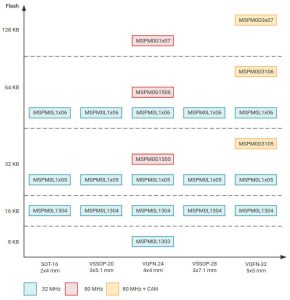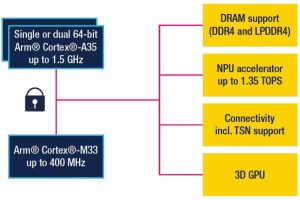
“TI is building the industry’s most comprehensive portfolio of Arm Cortex-M0+ based MCUs,” claimed TI MCU v-p Vinay Agarwal.
Two be known as MSPM0, there are initially two sub-groups, one clocking at 32MHz and the other at 80MHz.
- MSPM0L..
32MHz CPU, up to 64kbyte flash, up to 4kbyte ram
Analogue options: zero-drift op amps, TIA, 12bit 1Msample/s ADC, fast comparator - MSPM0G..
80MHz CPU, up to 128kbyte flash, up to 32kbyte ram
Analogue options: zero-drift op amps, dual 14bit 250ksample/s ADCs, dual 12bit 4Msample/s ADCs, fast comparators, 12-bit 1Msample/s DAC
CAN interface options up to 5Mbit/s, including 2.0A, 2.0B, or FD (flexible data-rate)
This is the first time a zero-drift op-amp, which could ease precision sensor interfacing considerably, has been seen in an MCU by Electronics Weekly.
The MSPM0L130x data sheet (see below) gives a glimpse of the chopping op-amp: 0.5µV/°C drift, 10pA input bias and integrated programmable (up to 32x) gain stage. It also reveals a two-mode comparator: 40ns propagation delay fast mode and 1µA low-power mode, with an 8bit reference DAC.
Packages will range across 16 to 64pads, and the smallest flash size planned is 16kbyte.

For prototyping, the there are hardware development kits for MSPM0L1306 and MSPM0G3507, and there will be a MSPM0 software development kit with drivers, libraries, over 200 code examples and sub-system designs.
“Design support resources and coding tools, including graphical tools that streamline device configuration, help designers code once and then scale across future MSPM0-based designs”, said TI.
See the MSPM0 MCU on TI’s stand at embedded world – number 215 in hall 3A. or look up MSPM0 on this web page.
 Electronics Weekly Electronics Design & Components Tech News
Electronics Weekly Electronics Design & Components Tech News



